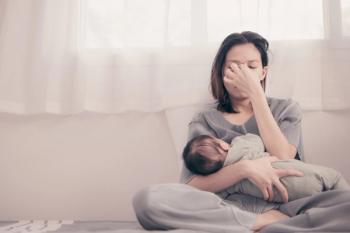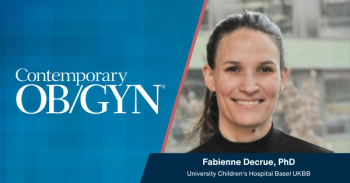
Postpartum psychosis risk 10-fold higher with sibling history
New research reveals a strong genetic connection in postpartum psychosis, emphasizing the need for early screening in high-risk women.
The odds of postpartum psychosis are increased 10-fold among women whose sister previously developed the condition, according to a recent study from Mount Sinai researchers.1
Raising awareness for early detection
This data indicates that postpartum psychosis has genetic and shared environmental influences, providing more insight into this rare but severe mental illness. It also allows clinicians to have a greater understanding, as postpartum psychosis is often difficult to diagnose and address.1
“Every woman of childbearing age and their physicians need to know about the existence of, severity, symptoms, and familial risk for postpartum psychosis so it can be promptly diagnosed and, hopefully, prevented,” said Veerle Bergink, MD, PhD, Director of the Women’s Mental Health Center at Mount Sinai and co-senior author of the paper.1
Data for the analysis was obtained from Swedish national registers.2 This included data from the Medical Birth Register about women with their first live childbirth from January 1, 1980, to October 31, 2017. These patients were followed from birth until December 31, 2017. Family data was obtained from the Multi-Generation Register.
Defining and diagnosing postpartum psychosis
A postpartum psychosis diagnosis was reported as the primary outcome, determined using diagnostic information within the Swedish National Patient Register. This register included both inpatient and outpatient data, and while outpatient care was slightly less covered than inpatient care, the care provided by public caregivers was nearly equally comprehensive.2
Diagnoses were based on ICD codes, with both primary and secondary diagnoses included in the analysis. Investigators relied on a diagnostic classification widely used in literature to identify postpartum psychosis cases, which is defined as mania or psychosis with postpartum onset.2
Cases up to 3 months after childbirth were evaluated. Covariates included the year of first-ever childbirth, maternal age at first-ever childbirth, and any bipolar disorder diagnosis before first-ever childbirth.2
Study population and prevalence
There were 1,648,759 women included in the final analysis, 0.15% of whom were diagnosed with postpartum psychosis in the 3 months following childbirth. In comparison, 10.9% presented with any menstrual disorder. 2
In patients with postpartum psychosis, the prevalence of bipolar disorder and other mental health diagnoses were 49% and 24%, respectively. This indicated 73% of this population had a preexisting mental health condition before their first-ever childbirth.2
Familial risk
An adjusted relative recurrence risk for postpartum psychosis of 10.34 was reported among women whose full siblings developed the condition, vs 1.82 for those whose cousins presented with postpartum psychosis. When adjusting for birth year, age at childbirth, and bipolar disorder before birth, these risks were 6.88 and 2.08, respectively.2
The risk estimate for full siblings was slightly decreased when limiting the analysis to births after 2001, at 7.82. However, the risk for cousins remained consistent at 1.79. Additionally, no differences were noted in the relative risk for more severe postpartum psychosis requiring inpatient admission vs standard postpartum psychosis among full siblings.2
Investigators also analyzed the risk in patients with ICD-10 codes only. In this analysis, a full-sibling relative recurrence risk of 8.65 was reported. Overall, the data highlighted increased odds of postpartum psychosis among women whose female siblings experienced the condition.2
“We hope this new data will help move the needle and impart change,” said Bergink.1 “With wider recognition of this particular condition and risk factors for it, measures can and should be taken to help ease the burden for women during this postpartum period.”
References
- Women whose sister experienced postpartum psychosis are more than 10 times as likely to experience it themselves, according to new research. The Mount Sinai Hospital. May 20, 2025. Accessed June 2, 2025. https://www.eurekalert.org/news-releases/1084625.
- Kępińska AP, Robakis TK, Humphreys K, et al. Familial risk of postpartum psychosis. The American Journal of Psychiatry. 2025;182(6). doi:10.1176/appi.ajp.20230576
Newsletter
Get the latest clinical updates, case studies, and expert commentary in obstetric and gynecologic care. Sign up now to stay informed.
















